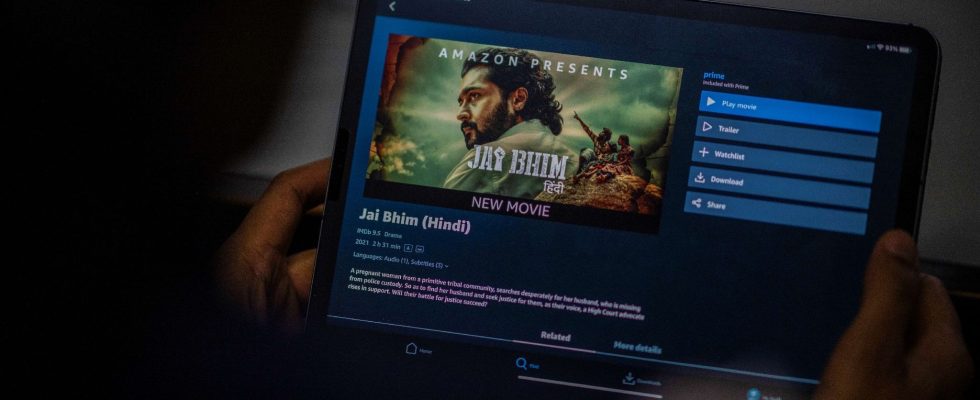Where is that damn button hidden? Internet users who try to unsubscribe from a service are regularly confronted with this headache. They explore the site from top to bottom. Go through each sub-menu of each heading under a magnifying glass. Nothing works: impossible to locate a button, a form or even a contact to delete their subscription to the service. From these tedious quests, many come out ashamed, convinced that they are not smart enough or up to date with digital uses. The reality is more cynical: they are often the victims of a trap deliberately set for them by tech professionals in order to influence their behavior.
These virtual pitfalls called dark pattern (or misleading design) abound on the Internet. And the one consisting in hiding the unsubscribe options under an obscure architecture or sibylline formulations is far from being the only example. The tech giants have also become masters in the art of surreptitiously validating contract changes. The “I accept” button such a new option will, for example, always be more colorful and bigger than the “I refuse” button. In 2016, Facebook even went a step further to convince as many of its customers as possible to allow Messenger to send and receive SMS. Instead of asking them clearly whether or not they accepted the option, the group sent an ambiguous message with a description of the option followed by a single blue OK button. It was still possible to refuse the option by using the back command or by going to browse in the settings. But the set was presented in such a way that most Internet users logically believed that they had to accept the option.
THE dark patternthese traps set for Internet users
Travel booking platforms also use and abuse these dark pattern. When, for example, they flash more or less sincere warnings, suggesting that there are almost no more places available. For some web designers, even the “infinite thread” of social networks could fall into the category of these dark pattern to ban, the continuous scrolling of new publications often encouraging Internet users, hypnotized, to spend much more time online than they intended. Some sites like Deceptive Design have made a specialty of identifying these little gems of deceit. The Federal Trade Commission (FTC), the US competition watchdog, is also taking a close interest. The FTC filed a lawsuit on June 21 against Amazon that it accuses of using these misleading web designs to boost its Prime subscriber base.
“Amazon tricks consumers into buying recurring subscriptions without their consent. Methods that frustrate them and cost them a lot of money,” FTC chairwoman Lina Khan said in a statement. In the viewfinder of the regulator, several elements. First, the validation step of the shopping cart. “The consumer is presented with many options to subscribe to Amazon Prime. But the option to pay for purchases without taking out a subscription is more difficult for Internet users to see. And in some cases, the button presented to consumers to end their purchase does not clearly explain that they agree to subscribe to Prime”.
The procedure for terminating one’s Prime subscription does not suit the FTC either, which considers it too “difficult to find”. She also criticizes the giant for imposing on the Internet user the display of “multiple pages encouraging him to continue the subscription with a reduction, to end the automatic renewal, then to abandon the idea of unsubscribing. This n It is only after seeing all these pages that the consumer can finally terminate the service.” Accusations that Amazon considers false “both in fact and in law. The reality is that customers appreciate Amazon Prime and that we make it clear and simple to subscribe or cancel the subscription.” Contacted by L’Express, the group says it is now waiting for “the case to take its course” and to be able to assert its “elements before the courts.”
Justice will decide. This type of business is in any case likely to multiply because regulators around the world are showing themselves to be less and less naive on these subjects. Even if they could already fall within the scope of certain texts – in particular those concerning misleading commercial practices – the dark pattern are indeed explicitly targeted by the new Digital Services Act of the European Union. These cases also have the merit of reminding us that some of the irritating aspects of the digital world are not inevitable. And that other habits and customs can be considered. Some, like Netflix, have even made it a selling point. Upon his arrival, the streaming pioneer won over the public with an attractive catalog of series but also with the promise, innovative at the time, of a flexible subscription, cancellable without notice and with a simple click.
In the field of social networks too, we are now careful to stand out from the old world and its excesses. When start-ups ten years ago presented themselves as “the next Facebook”, the apostles of the mysterious Web3, like Jack Dorsey, now swear to build radically different social networks that will leave the Internet user in control of what is present. After years of gavage of eye-catching content, the promise could seduce. Whether it will hold remains to be seen.
